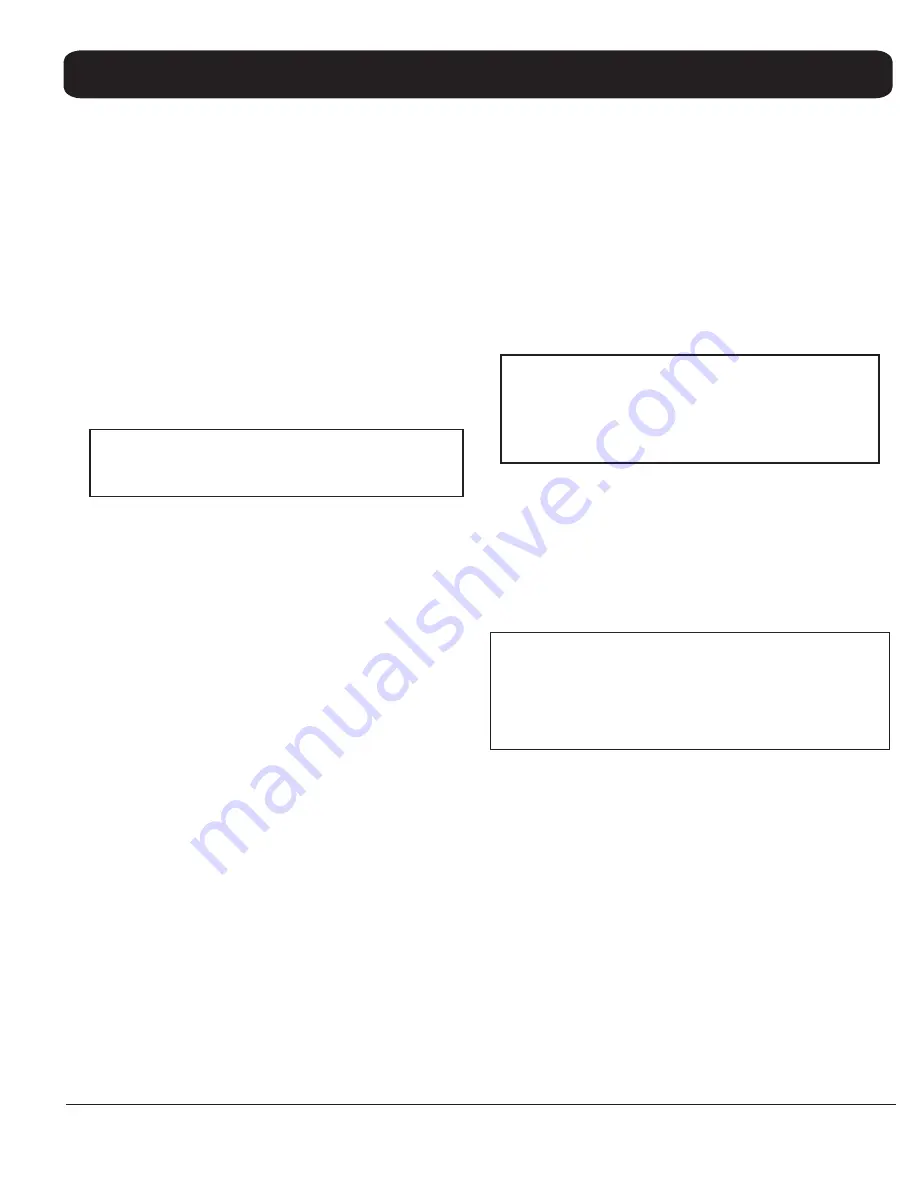
3-4
Form No. S-2110 08/03
Printed in U.S.A
.
SECTION 3 maintenance
Nut disassembly requires extreme care in handling to
avoid loss of bearing balls and other small parts. The
Saginaw Screw must be removed from the kettle
(
par.3.3.5.1
) and the procedure completed over a clean
work surface. A small clean container and clean cloth are
required.
1. Place a clean cloth on the work surface with edges
gathered to form a pocket to retain the bearing balls.
2. Place the Ball Nut Assembly over the pocket and
remove the two Clamp Screws and the Guide Clamp.
3. Remove both halves of theGuidesimultaneously to
prevent distortion of either half.
4. Catch all the Balls on the cloth by slowly rotating the
Ball Nut on the screw. Place all balls in a small
container.Take an accurate ball count and record.
CAUTION
Every bearing ball is required for reassembly. Exercise
care in handling to avoid loss.
5. Remove the stop collar (5) held by set screw (3) at the
free end of the screw shown in Figure 4-7.
6. Slide the Ball Nut off the free end of the screw.
3.3.5.4 Ball Nut Inspection:
Disassembly of the ball nut
must be completed to permit inspection (See par.
3.3.5.3). A Ball Bearing Replacement Kit containing
bearing balls and ball guide is available from Market
Forge parts distributors. Should the ball nut show
excessive wear I the entire Saginaw Screw assembly
must be replaced. Inspect components for wear points:
a. Balls. Check a random sample of 20 balls for
signs of scuffing or fish scaling. Diameter
variation between balls and trueroundness of
each one must be within .0001 inch. Balls which
fail to meet these requirements should be
replaced using the Ball Bearing Replacement Kit.
b. Guide. Inspect the pick-up fingers which consist
of short extensions at the end of each half guide.
Minor burrs can be removed and the guide
reused. If a ball impression appears on the finger
tips or the halves were distorted during removal,
the guide must be replaced.
c. Ball Nut. Inspect the internal threads of the ball
nut for signs of excessive wear, pitting, gouges,
corrosion or spalling in the ball groove area. If
these flaws are detected, the entire Saginaw
Screw assembly should be replaced.
3.3.5.5 Ball Nut Reassembly and Bearing Replacement:
With the ball nut disassembled (par. 3.3.5.3) complete
the following reassembly, using either existing bearing
balls or substituting a Ball Bearing Replacement Kit (part
number 91-1490).
1. Clean all ball nut components with a commercial
solvent and dry thoroughly before reassembly.
2. Slide the ball.nut onto the free end of the screw, round
nut end first, as shown in Figure 4-7.
3. Replace the stop collar (5) , Figure 4-7.
CAUTION
Bearing Balls are retained in the ball nut only when it is
mounted on the screw. To prevent the nut from
accidentally spinning off the screw the stop collar (or
other obstruction) must be placed on the free end.
4. Center the ball nut grooves on the shaft grooves by
inserting a cylindrical object (a drill bit shank, or other
object of same diameter as bearing balls), into the ball
nut return circuit hole. Carefully withdraw, taking care not
to disturb nut-to-screw alignment.
5. Insert bearing balls into the guide opening using slight
rotation of the screw to help feed them into the grooves.
Place remaining balls into one half of the return guide.
NOTE
If a Ball Replacement Kit is to be installed, first count out
the same number of new bearing balls as the number of
worn balls being replaced. DO NOT try to add extra balls.
There must be some free space in the circuit so that balls
will roll and not skid.
6. Place a dab of bearing grease at each end of the
half return guide to hold balls in place. Place the
mating half return guide over the half filled with balls
and insert the two ends of the ball guide into the
holes in the ball nut. Seat by tapping gently with a
rawhide or plastic mallet.
7. Inspect for free movement of the ball nut along the
entire stroke. There should be no binding, squeal, or
roughness at any point.
8. Place guide clamp in position and secure with
clamp screws.













































